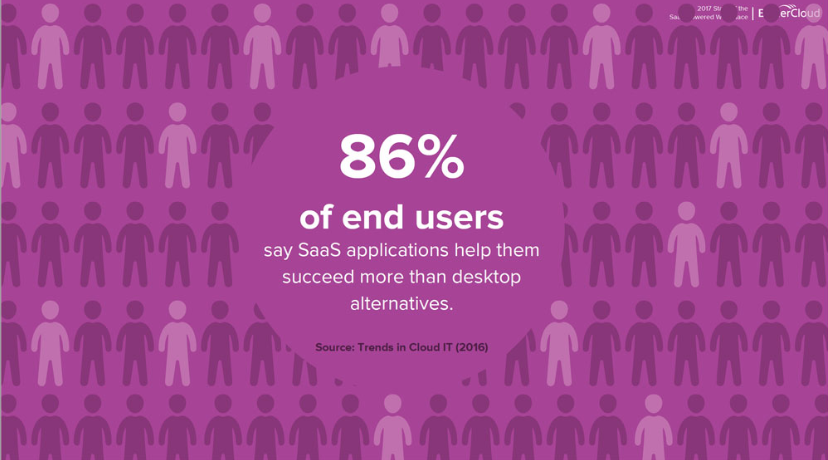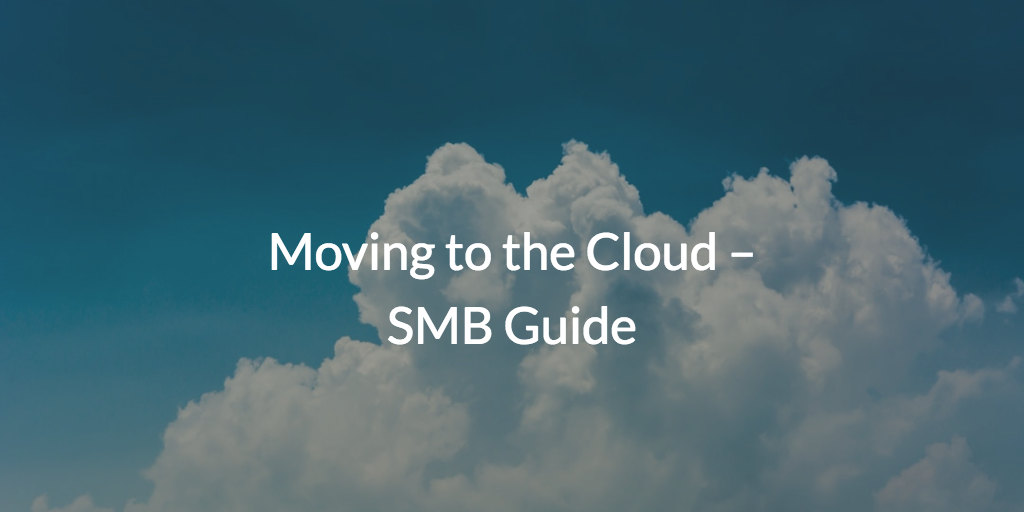Small-to-medium sized businesses (SMBs) have been the growth engine for economies worldwide. With modern enhancements to technology and the increased accessibility SMBs have to it, undoubtedly, SMBs will be even more of a force in global economies. Despite the macro environment success, SMB owners are constantly worried about how they can lucratively grow their businesses. With this issue in mind, many SMBs are choosing to move to the cloud.

Companies that adopted cloud services saw an improvement of roughly 21% in time to market, 15% decrease in IT spending, and an overall 20% increase in company growth, according to this 2014 study by McAfee. Ultimately, the drivers for adopting technological advancements like the cloud are quite simple: they increase customer opportunity and profit. Because of this, approximately 78% of SMBs are predicted to adopt cloud computing by 2020.
However, sometimes, the correlation isn’t as direct as SMB owners would like. Shifting from a traditional, on-prem IT solution to a cloud-forward alternative—especially when the on-prem solution is operating perfectly fine—can be a tough pill to swallow. This guide to moving to the cloud for SMB owners can provide a window into the benefits of the transition and how to justify the time and expenses. In this post, we’ll explore five critical reasons for SMB owners to consider for transitioning their IT infrastructure to the cloud.
Five Critical Reasons for SMBs to Move to the Cloud
1.Core Competencies

First and foremost, SMBs are always tight on resources. There are hardly enough people to accomplish every pressing task, and more often than not, not every person is qualified to do the extra roles that they are asked to do. In the instance that the IT infrastructure isn’t offloaded, the IT admin can be overwhelmed with projects to keep the organization secure and operating accordingly. Shifting to cloud infrastructure and web applications offloads work, so the organization can work on more critical projects while their IT infrastructure is being managed remotely. Time spent on projects or tasks that aren’t unique to the organization or provide an explicit competitive advantage should be outsourced whenever possible. Coupled with the cost savings of the cloud (which we’ll discuss later) and the ability to focus on core responsibilities, it’s like finding money in your pocket.
2. Increased Productivity

Many cloud solutions increase the productivity for SMBs and MSPs alike, and 86% of end users say SaaS apps helped them succeed more than desktop alternatives. For example, for a few dollars per month, there are any number of productivity enhancing solutions for IT organizations to choose from, and perhaps more importantly, for the end users in the organization. Think of solutions you come in contact with every day: Slack (workplace chat), Monday.com (project management), Quickbooks Online (cloud-based accounting), Yesware (sales team productivity). These and thousands of other solutions drive home why this economic equation makes sense. With SaaS apps, end users experience a 48% reduction in email, 30% fewer scheduled meetings and a 25% increase in CSAT (BetterCloud). Your employees should be able to get more done in the time they are working, and when that happens, your business can generate more business.
3. Greater Flexibility

As opposed to the limitations of an on-prem infrastructure, with cloud infrastructure and web applications, end users are free to implement the best solutions for their needs. One caveat to this is that IT admins and MSPs should counsel their end users to understand data portability. Many web applications rely on their data and reporting as a way to retain customers. It is critical to ensure that data can be exported whenever needed without any hiccups. The IT landscape is shifting so quickly that it’s crucial for organizations to not be tied to a solution, giving them the option to shift as needed. Cloud and web solutions are much easier to change when needed.
4. OpEx vs CapEx

Cash flow. It’s critical that an SMB never runs out of cash. Just like any other business, SMB owners spend a great deal of time thinking and worrying about their cash flow. Cloud infrastructure has completely changed the game of purchasing IT solutions. No longer do SMBs need to front the funds for servers, network equipment, software, and more prior to reaping the benefits. According to a recent study, when businesses move to the cloud, they experience a 16% average reduction in operational costs, a 15% reduction in IT spending, and a nearly 17% reduction in average IT maintenance costs. Cloud computing adapts to a business’ existing growth model, allowing them to create more accessible workspaces that both staff and clients can access remotely. The vast majority of cloud solutions can be purchased on a monthly basis, and costs are directly correlated to what the SMB uses.
5. Cost of Ownership

Cloud solutions need to be more cost effective than their on-prem counterparts in the short term and long run combined. The good news is that there have been numerous studies done on the total cost of ownership of cloud infrastructure and web applications, and it is indeed cheaper. A study conducted by McAfee™ shows that companies which adopted cloud services experienced an 19% increase in process efficiency and a 15% reduction in IT spending.
Should You Move to the Cloud?

Even with all of these compelling reasons to move to the cloud as an SMB, many owners struggle with the shift to the cloud because of existing investments in their IT infrastructure. There are, of course, no easy answers here. SMB owners need to weigh the benefits listed above relative to their investments, and ultimately, their competitive position relative to their opportunities.
Explore More About Moving to the Cloud as an SMB
Are you interested in understanding more about the business case to move to the cloud as an SMB? Discover how the JumpCloud® Directory-as-a-Service® platform has allowed organizations to move entire IT infrastructures to the cloud. Feel free to contact us or sign up for a free account here. You can also read the case studies from JumpCloud customers.
